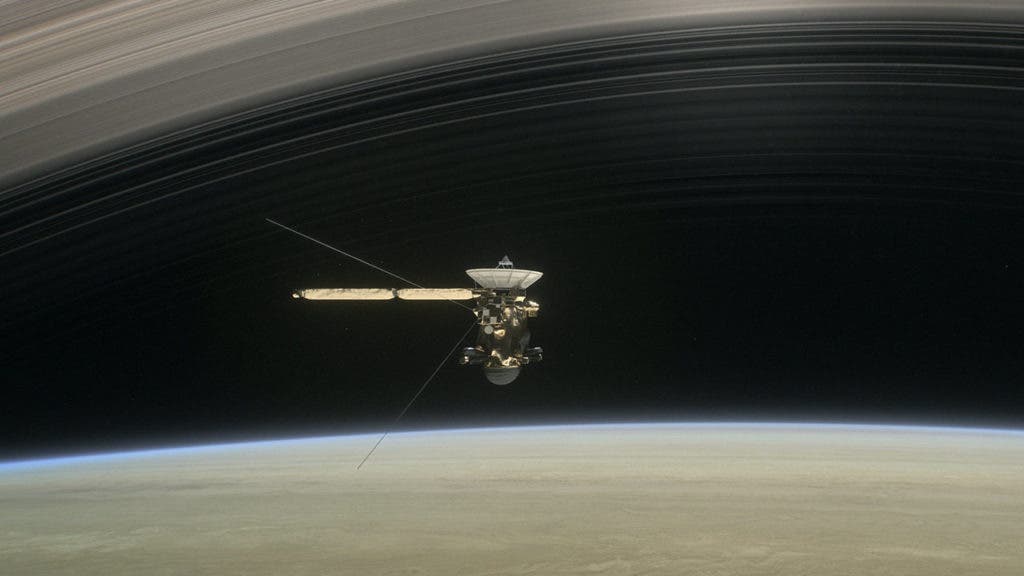The Cassini spacecraft will get a burial place fit for such a long-trekked explorer: Saturn.
This small but venerable craft let humanity peer into Saturn and its moons on a level of detail our ancestors couldn’t even dream about. Throughout its explorations, Cassini beamed back breathtaking photographs, ignited hope for life on Jovian and Saturnian moons, and performed humanity’s most distant landing.
After a life of exploratory glory, Cassini is currently about halfway through the last leg of its journey. So NASA has decided to show the craft off with fire in the sky: on its last day before fuel runs out, 15 September, Cassini will dive into Saturn’s atmosphere to be vaporized in a blaze of glory. This is necessary to ensure that Cassin won’t infect any of the other nearby places (which could harbor indigenous life) with any clandestine Earth germs.
Still, the ship isn’t beat yet, and still, has important work to do as it gets closer to Saturn than any man-made object ever has. For instance, it has recently found that Saturn’s magnetic field doesn’t have any particular tilt, which is quite problematic since a) scientists were planning to use that to calculate how long a day is on Saturn and b) it kinda throws a wrench in our understanding of planets. It was thought that tilt is instrumental in generating a planet’s magnetic field, by allowing charges to form and flow through the liquid metal — but Saturn does without it.
“This planned conclusion for Cassini’s journey was far and away the preferred choice for the mission’s scientists,” said Linda Spilker, Cassini project scientist at NASA’s Jet Propulsion Laboratory (JPL) in Pasadena, California. “Cassini will make some of its most extraordinary observations at the end of its long life.”
“No spacecraft has ever gone through the unique region that we’ll attempt to boldly cross 22 times,” added Thomas Zurbuchen, associate administrator for the Science Mission Directorate at NASA Headquarters in Washington. “What we learn from Cassini’s daring final orbits will further our understanding of how giant planets, and planetary systems everywhere, form and evolve.”
“This is truly discovery in action to the very end.”
Here’s a video from NASA detailing Cassini’s final mission. It’s quite epic.
EDIT: This article has been edited. The title and one paragraph erroneously stated that Cassini was headed for Jupiter, instead of Saturn.










